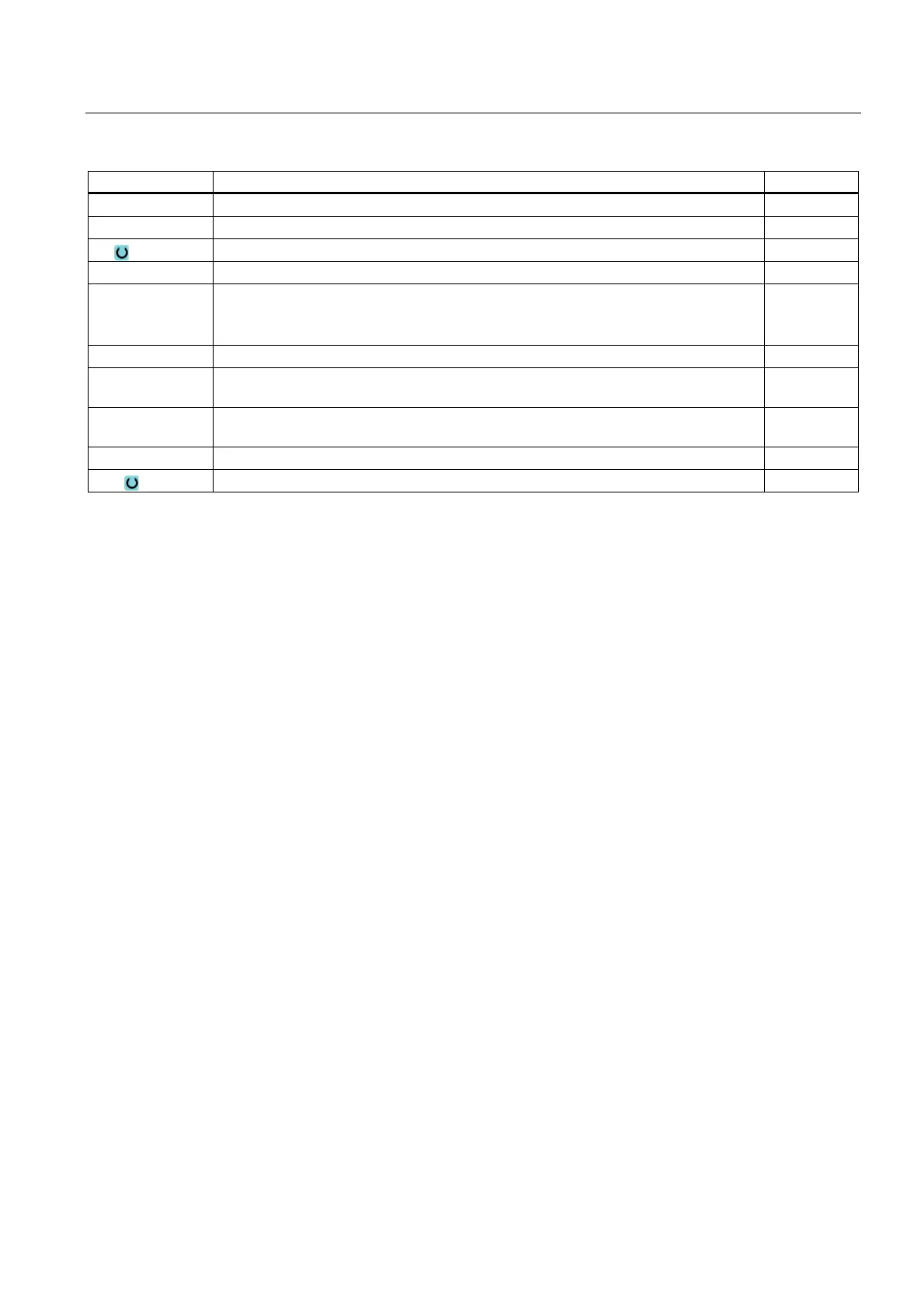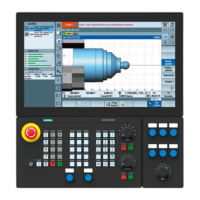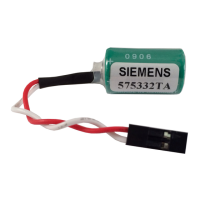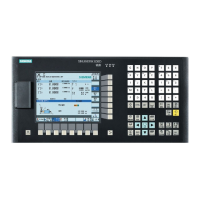Programming technological functions (cycles)
8.2 Milling
Milling
Operating Manual, 03/2010, 6FC5398-7CP20-1BA0
301
Parameter Description Unit
R Corner radius mm
α0 Angle of rotation Degrees
Z1 Spigot depth (abs) or depth relative to Z0 (inc) - (only for ∇ and ∇∇∇) mm
DZ Maximum depth infeed - (only for ∇ and ∇∇∇) mm
UXY Plane finishing allowance for the length (L) and width (W) of the rectangular spigot.
Smaller rectangular spigot dimensions are obtained by calling the cycle again and
programming it with a lower finishing allowance. - (only for ∇ and ∇∇∇)
mm
UZ Depth finishing allowance (tool axis) - (only for ∇ and ∇∇∇) mm
W1 Width of blank spigot (important for determining approach position) - (only for ∇ and
∇∇∇)
mm
L1 Length of blank spigot (important for determining approach position) - (only for ∇ and
∇∇∇)
mm
FS Chamfer width for chamfering - (for chamfering only) mm
ZFS Insertion depth of tool tip (abs or inc) - (for chamfering only) mm
8.2.5 Circular spigot (CYCLE77)
Function
You can mill various circular spigots with the "Circular spigot" function.
In addition to the required circular spigot, you must also define a blank spigot, i.e. the outer
limits of the material. The tool moves at rapid traverse outside this area. The blank spigot
must not overlap adjacent blank spigots and is automatically placed on the finished spigot in
a centered position.
The circular spigot is machined using only one infeed. If you want to machine the spigot
using multiple infeeds, you must program the "Circular spigot" function several times with a
reducing finishing allowance.
Approach/retraction
1. The tool approaches the starting point at rapid traverse at the height of the retraction
plane and is fed in to the safety clearance. The starting point is always on the positive X
axis.
2. The tool approaches the spigot contour sideways in a semicircle at machining feedrate.
The tool first executes infeed at machining depth and then moves in the plane. The
circular spigot is machined depending on the programmed machining direction (up-
cut/down-cut) in a clockwise or counterclockwise direction.
3. When the circular spigot has been traversed once, the tool retracts from the contour in a
semicircle and then infeed to the next machining depth is performed.
4. The circular spigot is approached again in a semicircle and traversed once. This process
is repeated until the programmed spigot depth is reached.
5. The tool moves back to the safety clearance at rapid traverse.

